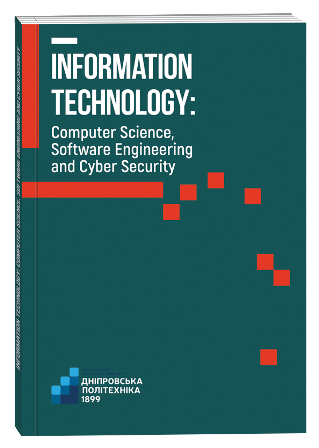ROUTING MODEL IN COMPUTER NETWORKS BASED ON GRAPHIC NEURAL NETWORKS
DOI:
https://doi.org/10.32782/IT/2025-1-11Keywords:
computer network, routing, graph neural network, convolutional graph neural network, machine learning.Abstract
In computer networks, efficient routing is a key element for ensuring reliable and fast data transmission. Recently, the use of graph neural networks to solve routing problems has been gaining popularity. Graph neural networks allow to model complex relationships in networks and adapt to changing conditions, which makes them a promising tool for optimizing data transmission processes. The purpose of the work is to develop an effective routing model in computer networks to ensure a reduction in average latency, improved throughput, and uniform load distribution between nodes, taking into account dynamic network conditions and complex topology. Methodology. The study analyzes the use of graph neural networks to solve the routing problem. The routing problem is presented as a machine learning problem, namely, the classification of network graph edges that form the optimal route. Modern tools and technologies, such as Mininet, PyTorch Geometric, and Ryu SDN Controller, were used to build the optimization model. Scientific novelty. The proposed routing model in a computer network is based on a convolutional graph neural network with two convolutional layers, which allows taking into account complex network topologies. Adding a regularization layer prevented overtraining of the model. Conclusions. A routing model in computer networks using graph neural networks was developed. The achieved accuracy of the model was 97.85 %, high values of precision and recall demonstrate a low value of the 1st and 2nd kind errors. The results of testing and integration of the model proved that GNNs are able to effectively solve complex routing problems, taking into account dynamic changes in the network and complex topology. The model can be used to monitor and manage traffic in real computer networks, especially under conditions of high loads or potential attacks.
References
Truong N. B., Lee G. M., Ghamri-Doudane Y. Software defined networking-based vehicular Adhoc Network with Fog Computing. Proceedings of the 2015 IFIP/IEEE International Symposium on Integrated Network Management, IM 2015, pp. 1202–1207. DOI: https://doi.org/10.1109/INM.2015.7140467
Lifan Mei, Jinrui Gou, Jingrui Yang, Yujin Cai, Yong Liu. On Routing Optimization in Networks with Embedded Computational Services. IEEE Transactions on Network and Service Management, 2024. https://doi.org/10.48550/arXiv.2210.03338
Basta A., Kellerer W., Hoffmann M., Morper H. J., Hoffmann K. Applying nfv and sdn to lte mobile core gateways, the functions placement problem. Proceedings of the 4th workshop on All things cellular: operations, applications, & challenges, 2014, pp. 33–38.
Herrera J. G., Botero J. F. Resource allocation in nfv: A comprehensive survey. IEEE Transactions on Network and Service Management, 2016, vol. 13, no. 3, pp. 518–532.
Ujjwal Sinha, Vikas Kumar, Shubham Kumar Singh. Routing Algorithms: A Reiew. ArXiv, Computer Science, Networking and Internet Architecture, 2024. URL: https://arxiv.org/pdf/2403.11228
Oluwaseyi Osunade. A Packet Routing Model for Computer Networks. International Journal of Computer Network and Information Security, 2012, 4, pp. 13–20. DOI: https://doi.org/10.5815/ijcnis.2012.04.02
Akbor Aziz Susom. Effectiveness of Routing Protocols for Different Networking Scenarios. Advances in Science Technology and Engineering Systems Journal, 2018, vol. 3, no. 4, pp. 112–121. DOI: https://doi.org/10.25046/aj030412
Ambresh G. Biradar. A Comparative Study on Routing Protocols: RIP, OSPF and EIGRP and Their Analysis Using GNS-3. 5th IEEE International Conference on Recent Advances and Innovations in Engineering (ICRAIE), 2020. DOI: https://doi.org/10.1109/ICRAIE51050.2020.9358327
Alotaibi Hamad, Gregory Mark, Li Shuo. Multidomain SDN-Based Gateways and Border Gateway Protocol. Journal of Computer Networks and Communications, 2022. DOI: https://doi.org/10.1155/2022/3955800
Mohamed Radzi, Nurul Asyikin, Mohd Azmi, Kaiyisah Hanis, Abdullah, Fairuz, Wan Ahmad, Wan Siti Halimatul Munirah. A New Machine Learning-based Hybrid Intrusion Detection System and Intelligent Routing Algorithm for MPLS Network. International Journal of Advanced Computer Science and Applications, 2023, vol. 14, no. 4, pp. 94–107. DOI: https://doi.org/10.14569/IJACSA.2023.0140412
Bin Dai, Yuanyuan Cao, Zhongli Wu, Zhewei Dai, Ruyi Yao, Yang Xu. Routing optimization meets Machine Intelligence: A perspective for the future network. Neurocomputing, 2021, vol. 459, pp. 44–58, https://doi.org/10.1016/j.neucom.2021.06.093
Song Yu, Ao Xiong, Xuesong Qiu, Shaoyong Guo, Dong Wang, Da Li, Xin Zhang, Yue Kuang. A Blockchain-Based Method for Optimizing the Routing of High-Frequency Carbon-Trading Payment Channels. Electronics, 2023, no. 12: 2586. https://doi.org/10.3390/electronics12122586
Zhou J., Cui G., Zhang Z., Yang C., Liu Z., Sun M. Graph Neural Networks: A Review of Methods and Applications. ArXiv, Computer Science, Networking and Internet Architecture, 2018. DOI: https://doi.org/10.48550/arXiv.1812.08434
Kawamoto T., Tsubaki M., Obuchi T. Mean-field theory of graph neural networks in graph partitioning. NeurIPS, 2018, pp. 4366–4376.
Jiang W., Han H., Zhang Y., Wang J., He M., Gu W., Mu J., Cheng X. Graph Neural Networks for Routing Optimization: Challenges and Opportunities. Sustainability 2024, 16, 9239. https://doi.org/10.3390/su16219239







